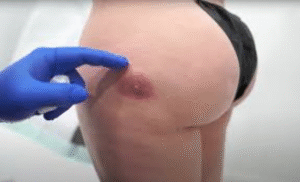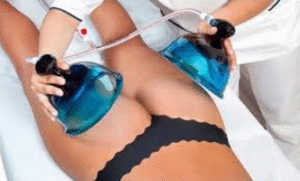Are you thinking of getting a Brazilian butt lift to accentuate your curves and increase your self-esteem? You’re not alone. This popular cosmetic procedure has gained tremendous popularity over the past decade, with thousands of people seeking to achieve that coveted hourglass figure.
However, before you make this life-changing decision, it’s crucial to understand the Brazilian Butt Lift risks and side effects that come with this surgical procedure. While social media showcases stunning before-and-after transformations, the reality is that Brazilian Butt Lift surgery carries significant risks that every potential patient should carefully consider.
This article will walk you through everything you need to know about the potential dangers, complications, and side effects associated with Brazilian Butt Lift surgery and also explore safety measures, recovery expectations, and alternative options to help you navigate this important decision with confidence and clarity.

Understanding Brazilian Butt Lift Surgery
This is a cosmetic surgical technique called a Brazilian Butt Lift, or BBL, which uses your own body fat to increase the size and shape of your buttocks. The process involves two main steps: liposuction to remove fat from areas like the abdomen, thighs, or back, followed by purification and injection of that fat into the buttocks to create a more rounded, lifted appearance.
The procedure has become increasingly popular because it offers a more natural alternative to butt implants while simultaneously contouring other areas of the body through liposuction. However, this dual approach also contributes to many of the Brazilian Butt Lift risks and side effects that patients may experience.
Understanding how the procedure works is essential for grasping why certain complications can occur. The fat transfer process requires precise technique and expertise, as the injected fat must integrate with existing tissue while maintaining adequate blood supply to survive in its new location.
Major Brazilian Butt Lift Risks and Side Effects
Fat Embolism
Fat embolism represents the most dangerous of all Brazilian Butt Lift risks and side effects. This life-threatening complication occurs when fat particles enter the bloodstream and travel to vital organs, particularly the lungs or brain. The risk is highest when fat is injected too deeply into the gluteal muscle rather than staying in the subcutaneous tissue layer.
Studies have shown that Brazilian Butt Lift procedures have one of the highest mortality rates among cosmetic surgeries, with fat embolism being the primary cause. Breathing problems, chest pain, disorientation, and in extreme situations, cardiac arrest, are all signs of a fat embolism. The significance of selecting a board-certified plastic surgeon with substantial BBL experience is highlighted by this risk.
Infection Complications
Infection represents another significant concern among Brazilian Butt Lift risks and side effects. Since the procedure involves multiple incision sites for both liposuction and fat injection, there are numerous opportunities for bacteria to enter the body.
Post-surgical infections can range from minor skin infections to serious deep tissue infections that may require hospitalization and additional surgery. Signs of infection include increased pain, swelling, redness, warmth at the surgical site, fever, and unusual discharge from incisions.
Prompt recognition and treatment of infections are crucial to prevent more serious complications like sepsis, which can be life-threatening.
Asymmetry and Contour Irregularities
Many patients experience asymmetry or uneven results as part of the Brazilian Butt Lift risks and side effects. Uneven fat absorption may be the cause of this, with one side of the buttocks retaining more transferred fat than the other. Natural healing variations, differences in blood supply, and patient factors like sleeping position during recovery can all contribute to asymmetrical outcomes.
Additionally, contour irregularities could form, giving the treated areas lumps, bumps, or depressions. While some minor irregularities may improve over time, significant asymmetry often requires revision surgery to correct.
Fat Necrosis and Absorption
Fat necrosis occurs when transferred fat cells die due to inadequate blood supply in their new location. This is among the more common Brazilian Butt Lift risks and side effects, affecting a significant percentage of patients to varying degrees. Dead fat tissue can form hard lumps or cysts that may be painful and require surgical removal.
Furthermore, during the healing process, a significant amount of transplanted fat is naturally reabsorbed by the body. Patients typically retain only 60-80% of the transferred fat, which means the final results may be smaller than immediately post-surgery.
Seroma Formation
Seromas are fluid collections that can develop at liposuction sites, representing another concern among Brazilian Butt Lift risks and side effects. These fluid pockets occur when lymphatic vessels are damaged during surgery, causing clear fluid to accumulate under the skin. While not immediately dangerous, seromas can be uncomfortable and may require drainage procedures to resolve.
Large seromas can interfere with proper healing and may increase the risk of infection if left untreated. Patients may notice swelling, fluid-like sensations, or visible fluid waves under the skin in areas where liposuction was performed.

Recovery-Related Side Effects
Pain and Discomfort
Significant pain and discomfort are expected from Brazilian Butt Lift during the recovery period. The discomfort can be particularly challenging because patients cannot sit directly on their buttocks for several weeks following surgery.
Pain levels vary among individuals, but most patients require prescription pain medication for at least the first week of recovery. The combination of multiple surgical sites and tissue trauma from fat harvesting and injection contributes to the overall discomfort experienced.
Mobility Limitations
Recovery from Brazilian Butt Lift surgery involves significant mobility restrictions that impact daily activities. Patients cannot sit normally for 2-8 weeks depending on their surgeon’s protocol, which affects work, driving, and basic activities. This limitation is necessary to protect the newly transferred fat and ensure optimal results.
The inability to sit normally represents one of the most challenging Brazilian Butt Lift risks and side effects for many patients, as it requires substantial lifestyle adjustments and may impact work arrangements. Patients must use special cushions when sitting is absolutely necessary and sleep on their stomach or sides during recovery.
Swelling and Bruising
Extensive swelling and bruising are normal Brazilian Butt Lift risks and side effects that can last for several weeks or months. The combination of liposuction trauma and fat injection causes significant tissue swelling, which can be dramatic initially and gradually resolve over time.
Bruising may be extensive, particularly in areas where liposuction was performed. The discoloration can be concerning for patients but typically resolves within 2-4 weeks. Compression garments help manage swelling but must be worn consistently as directed by the surgeon.
Long-Term Complications and Considerations
Scarring
Scarring is still one of the permanent hazards and adverse effects of Brazilian Butt Lift, even though the incisions are usually minor. Liposuction creates multiple small scars at cannula insertion sites, while fat injection may leave tiny marks at injection points. Most scars fade significantly over time but may remain visible, particularly in individuals prone to keloid or hypertrophic scarring.
The quality of scarring depends on factors including genetics, skin type, wound care during healing, and surgical technique. Following post-operative scar care instructions can help minimize the appearance of surgical marks.
Need for Revision Surgery
A significant percentage of Brazilian Butt Lift patients require revision procedures, making this one of the important long-term Brazilian Butt Lift risks and side effects to consider. Revisions may be needed to address asymmetry, inadequate results, complications from the initial surgery, or changes that occur over time.
Revision surgery carries its own set of risks and may be more technically challenging than the initial procedure. The additional cost, recovery time, and potential complications of revision surgery should be factored into the decision-making process.
Changes Over Time
Body changes over time represent ongoing Brazilian Butt Lift risks and side effects that patients should understand. Weight fluctuations, aging, gravity, and lifestyle factors can all affect the long-term appearance of BBL results. Significant weight gain or loss can dramatically alter the appearance of both the buttocks and liposuction areas.
Maintaining stable weight and following a healthy lifestyle becomes crucial for preserving BBL results over time. Some patients may find that their results change in ways they didn’t expect as they age or experience life changes.
Factors That Increase Risk
Surgeon Selection and Experience
The choice of surgeon significantly impacts Brazilian Butt Lift risks and side effects. Board-certified plastic surgeons with extensive BBL experience have lower complication rates compared to surgeons who perform the procedure infrequently.
Medical tourism and seeking procedures in non-accredited facilities dramatically increases risk levels. Surgeons who inject fat into the gluteal muscle rather than keeping it in subcutaneous tissue layers create higher risk scenarios for their patients.
Patient Health Factors
Individual health factors influence Brazilian Butt Lift risks and side effects significantly. Patients with underlying medical conditions, smoking habits, poor nutrition, or unrealistic expectations face higher complication rates. Age, skin elasticity, and overall fitness level also impact both safety and results.
Diabetes, heart disease, or clotting issues are examples of pre-existing diseases that may make BBL surgery contraindicated or necessitate extra attention. Honest disclosure of medical history and lifestyle factors is essential for proper risk assessment.
Facility and Safety Standards
The surgical facility plays a crucial role in Brazilian Butt Lift risks and side effects. Accredited surgical centers with proper equipment, trained staff, and emergency protocols provide safer environments compared to non-accredited facilities. Office-based procedures may lack adequate safety measures for handling emergencies.
Anesthesia safety, sterile technique, and post-operative monitoring capabilities all vary significantly between facilities. Choosing an accredited surgical center with board-certified anesthesiologists reduces many potential risks.
Safety Measures and Risk Reduction
Proper Patient Selection
Reducing Brazilian Butt Lift risks and side effects begins with proper patient selection and realistic expectations. Ideal candidates are healthy individuals with adequate fat stores for harvesting, realistic expectations, and the ability to comply with post-operative restrictions.
Thorough medical evaluation, psychological assessment, and clear communication about expected outcomes help ensure patients are appropriate candidates for the procedure. Patients with unrealistic expectations or inadequate fat stores may be better served with alternative treatments.
Surgical Technique Modifications
Recent advances in surgical technique have helped reduce some Brazilian Butt Lift risks and side effects, particularly the risk of fat embolism. The use of blunt-tip cannulas, maintaining proper injection depth, and avoiding intramuscular injection have improved safety profiles.
Some surgeons now use ultrasound guidance during fat injection to ensure proper placement and avoid penetrating muscle layers. These technical improvements require specialized training and equipment but can significantly enhance patient safety.

Enhanced Recovery Protocols
Modern enhanced recovery protocols help minimize Brazilian Butt Lift risks and side effects through optimized pre-operative preparation, surgical technique, and post-operative care. These protocols may include nutritional optimization, smoking cessation, and detailed recovery planning.
Post-operative monitoring, early mobilization when appropriate, and structured follow-up care help identify and address complications early. Patient education about warning signs and proper recovery techniques is essential for optimal outcomes.
Alternative Options to Consider
Non-Surgical Butt Enhancement
For patients concerned about Brazilian Butt Lift risks and side effects, several non-surgical alternatives exist. These include injectable fillers specifically designed for buttock enhancement, though these require ongoing maintenance treatments and have their own limitations and risks.

Non-surgical options like radiofrequency treatments, muscle stimulation devices, and topical treatments may provide modest improvements without surgical risks. While results are typically less dramatic than BBL, these alternatives eliminate surgical complications and recovery requirements.
Exercise and Lifestyle Modifications
Targeted exercise programs focusing on gluteal muscle development can provide natural enhancement without any Brazilian Butt Lift risks and side effects. Strength training, resistance exercises, and specific workout routines can build and shape the buttocks over time.
While exercise cannot achieve the same dramatic changes as surgical procedures, it offers safe, sustainable results that improve overall health and fitness. Combining exercise with proper nutrition and body-positive mindset can help patients achieve satisfaction without surgical intervention.
FAQs
What is the death rate for Brazilian Butt Lift surgery?
Brazilian Butt Lift has one of the highest mortality rates among cosmetic procedures, with studies reporting death rates ranging from 1 in 3,000 to 1 in 20,000 procedures. This risk has led to increased safety protocols and surgical technique modifications in recent years. The actual risk varies significantly based on surgeon experience, facility standards, and patient factors.
How long do Brazilian Butt Lift complications last?
Minor side effects like swelling and bruising typically resolve within 4-8 weeks, while more serious complications can have lasting effects. Fat necrosis may require months to resolve or need surgical intervention. Asymmetry or contour irregularities may be permanent without revision surgery. Some complications like scarring are permanent, though they often improve in appearance over 12-18 months.
After getting a Brazilian butt lift, is it possible to sit normally?
Most surgeons require patients to avoid sitting directly on their buttocks for 2-8 weeks after BBL surgery to protect the transferred fat. During this period, patients must use special cushions that keep pressure off the buttocks or remain standing/lying down. Even after clearance to sit normally, some patients experience discomfort or changes in sensation that may persist for months.
What are the signs of BBL complications?
Warning signs of BBL complications include severe or worsening pain, difficulty breathing, chest pain, excessive swelling, signs of infection (fever, unusual discharge, increased redness), hard lumps or masses, severe asymmetry, and changes in skin color or temperature.
Any sudden onset of breathing difficulties, chest pain, or neurological symptoms requires immediate emergency medical attention as these may indicate fat embolism. Patients should maintain close contact with their surgical team and report any concerning symptoms promptly.
Is Brazilian Butt Lift worth the risk?
Whether BBL is worth the risk depends on individual circumstances, risk tolerance, and realistic expectations. While many patients achieve satisfactory results, the procedure carries significant risks including potential death, need for revision surgery, and substantial recovery requirements.
Patients must weigh these risks against their aesthetic goals and consider alternatives like non-surgical butt enhancement options.
Conclusion…
Understanding Brazilian Butt Lift risks and side effects is crucial for anyone considering this popular cosmetic procedure. While BBL can provide dramatic aesthetic improvements, it carries significant risks including fat embolism, infection, asymmetry, and the need for revision surgery. The recovery process involves substantial lifestyle modifications and potential complications that can impact daily life for weeks or months.
The key to minimizing Brazilian Butt Lift risks and side effects lies in careful surgeon selection, choosing accredited facilities, being an appropriate candidate, and having realistic expectations about outcomes and recovery. Patients must weigh the potential benefits against the substantial risks and consider whether alternative options might better serve their goals.
If you decide to proceed with BBL surgery, prioritize safety over cost savings, choose board-certified plastic surgeons with extensive BBL experience, and ensure you can comply with all post-operative requirements. Remember that the most important outcome is your health and safety, not just aesthetic results.



